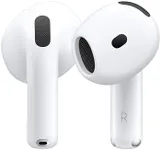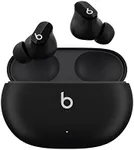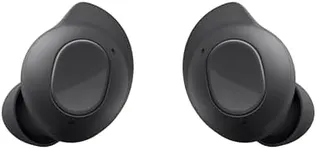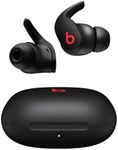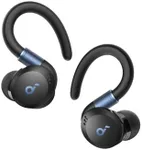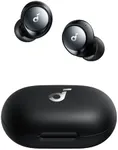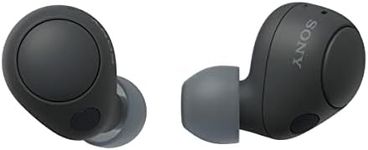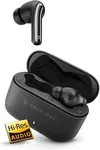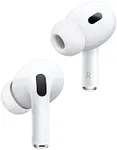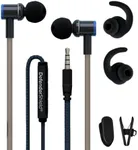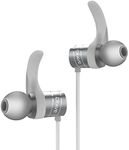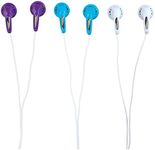Buying Guide for the Best In Ear Noise Cancelling Headphones
Choosing the right in-ear noise-cancelling headphones can significantly enhance your listening experience, whether you're commuting, working, or just relaxing. The key is to understand the various specifications and how they align with your personal needs and preferences. Here are the main specs to consider when selecting in-ear noise-cancelling headphones and how to navigate them.Noise CancellationNoise cancellation is a feature that reduces unwanted ambient sounds using active noise control. This is important because it allows you to enjoy your music or calls without being disturbed by external noise. Noise cancellation can vary in effectiveness; some headphones offer basic noise reduction, while others provide advanced noise-cancelling capabilities. If you frequently find yourself in noisy environments like airplanes or busy streets, opt for headphones with strong noise-cancelling features. For quieter settings, basic noise cancellation might suffice.
Sound QualitySound quality refers to how well the headphones reproduce audio. This is crucial for an enjoyable listening experience. Sound quality can be assessed by looking at factors like frequency response, clarity, and bass. Headphones with a wide frequency range (e.g., 20Hz to 20kHz) can reproduce a broader spectrum of sounds. If you enjoy bass-heavy music, look for headphones that emphasize lower frequencies. For classical or vocal music, clarity and balanced sound are more important. Consider your music preferences when evaluating sound quality.
Battery LifeBattery life indicates how long the headphones can operate on a single charge. This is important for convenience and uninterrupted listening. Battery life can range from a few hours to over a day. If you plan to use your headphones for long trips or extended periods without access to charging, look for models with longer battery life. For shorter, daily use, a moderate battery life may be sufficient. Some models also offer quick charging features, which can be a bonus if you're often on the go.
Comfort and FitComfort and fit refer to how well the headphones sit in your ears and how comfortable they are to wear for extended periods. This is important to prevent discomfort or pain during use. In-ear headphones come with different sizes and types of ear tips (e.g., silicone, foam) to ensure a good fit. If you have sensitive ears or plan to wear the headphones for long durations, prioritize models known for their comfort. Trying different ear tip sizes and materials can help you find the best fit for your ears.
ConnectivityConnectivity refers to how the headphones connect to your devices, typically via Bluetooth. This is important for compatibility and ease of use. Bluetooth versions can affect connection stability and range; newer versions (e.g., Bluetooth 5.0) offer better performance. Some headphones also support multipoint connectivity, allowing you to connect to multiple devices simultaneously. If you frequently switch between devices, this feature can be very useful. Ensure the headphones are compatible with your primary devices and consider any additional connectivity features that might enhance your experience.
Controls and FeaturesControls and features refer to the additional functionalities and how you interact with the headphones. This is important for convenience and usability. Common features include touch controls, voice assistants, and customizable sound settings. Touch controls allow you to manage playback and calls without reaching for your device. Voice assistants can help with hands-free operation. Customizable sound settings let you adjust the audio profile to your liking. Consider which features are most important to you and how they can improve your overall experience.
Durability and Build QualityDurability and build quality refer to how well the headphones are constructed and how long they are likely to last. This is important for long-term value and reliability. Look for headphones made with high-quality materials and good craftsmanship. Water and sweat resistance can also be important if you plan to use the headphones during workouts or in rainy conditions. Assess the build quality by reading reviews and considering the materials used. Choose a model that matches your lifestyle and usage patterns to ensure longevity.
